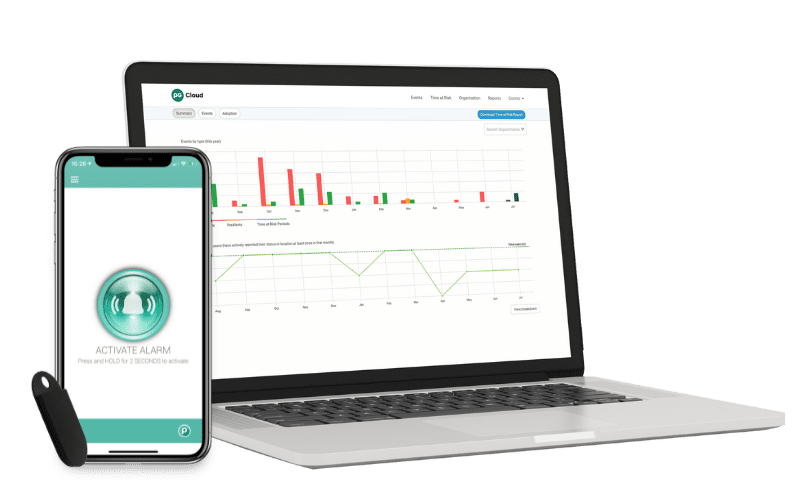How to get help fast with an effective escalation process
One crucial aspect of any lone worker safety policy is the establishment of an escalation process. In this blog post, we will discuss what an escalation process is, why it’s useful, who should be contacts, and how to set it up for your organisation.
What is an Escalation Process?
An escalation process is a predefined series of steps and actions that should be followed when a lone worker encounters a safety concern or emergency situation while on the job. The process is intended to ensure a lone worker receives assistance as quickly as possible when needed.
Why is an Escalation Process Useful?
There are several benefits to an escalation process within your lone worker safety policy:
Swift Response to Emergencies:
Not every situation will warrant an emergency response, or if it does, there may be other workers nearby who are able to provide assistance quicker. These other team members could:
-
-
-
-
- Assist with situations that do not require an urgent emergency response.
- Check on the well-being of colleagues or find someone nearby who can do so.
- Contact any relevant internal staff members.
- Provide emergency first aid
-
-
-
Peace of Mind:
Knowing that there is a structured plan in place in case of emergencies can provide peace of mind to both employees and their employers. It shows a commitment to employee safety.
Legal Compliance:
There are legal requirements and regulations that require organisations to have safety measures in place for lone workers. An escalation process helps fulfil these obligations.
Who should be contacts?
Identifying the right contacts is a crucial aspect of setting up an effective escalation process. Each process should be individual to your organisation to make sure it’s as efficient and relevant as it can be. That said, the following contacts might be commonly found on an escalation contacts list.
Supervisor or Manager
The immediate supervisor or manager of the lone worker will likely be the first point of contact. They can assess the situation and initiate the response process.
Co-workers or Team Members
Including colleagues who work nearby or who can provide assistance is essential. They can offer immediate support if they can reach the lone worker quickest.
Emergency Services
In an obvious emergency situation, the emergency services are the best port of call. Your escalation process might also include a step for contacting local authorities when necessary.
Family or emergency contacts
In some cases, it may be appropriate to include a family member as a backup contact. This can be especially useful if the lone worker has a medical condition or specific needs.
How your escalation process works with Pick Protection
With Pick Protection, your escalation process is shared with our partner Alarm Receiving Centres (ARCs), so when an SOS alarm is activated, the operators have your individual procedure to follow. Trained Operators will listen in when an alarm is raised and where it’s considered there is no immediate risk of harm but safety has not been confirmed, this is then passed to the escalation contact to follow their internal process to ensure the lone worker is safe.
An example might be if an SOS is activated following a Fall Detection alert on the app or device. The ARC operator might not be able to hear anything on the two-way audio, and can’t make contact with the lone worker by phone, so they go through the agreed escalation procedure.
If the operator has determined an emergency situation, they will first contact the relevant emergency service directly and share details of the SOS, while keeping the two-way audio connection open with the lone worker who raised the alarm and progressing with the escalation procedure.

Simplifying the process on the cloud
On the PG Cloud portal management system, you can amend your escalation process, which is then visible to the ARC operators, meaning you can quickly and simply make essential changes if, for example, someone moves department.

How to Set Up an Escalation Process
Creating an effective escalation process requires careful planning and communication. Here’s a step-by-step guide to setting up an escalation process for lone worker safety:
Identify Lone Workers
Determine which employees are classified as lone workers. This could include remote field workers, night-shift employees, or those working in isolated areas.
Define Safety Procedures
Work with your team to establish clear safety procedures that lone workers should follow. This may include checking in at specific intervals, using safety equipment, and reporting any concerns immediately. Take a look at our lone worker policy template which can help you define your safety protocols around those who work solo.
Create Contact Lists
Compile a list of people or services which should be notified in case of an emergency. Include phone numbers and email addresses for supervisors, co-workers, emergency services, and any family or emergency contacts.
For an escalation process to be effective, you need to make sure that the contacts are relevant to the lone worker, and their situation. Check that each contact:
- Is available, nearby and has a working phone that they carry around.
- Has agreed to the role in helping their colleagues.
- Has been made aware of who they are an escalation contact for, ensuring that they have access to their calendar and have the individual’s direct number.
Establish Communication Protocols
Define how lone workers will communicate their status and safety concerns. Ensure that they have access to reliable communication tools such as smartphones and establish regular check-ins.
Our PG Smart App allows users to set a Time at Risk, as well as send a Pre-Alert, raise an SOS and benefit from Fall Detection.
All alerts and locations are visible on our management portal, the PG Cloud, where you can use features such as “locate now” to check in on those you’re concerned about, and reports to see how often apps and devices are being used.
Training and Education
Train your lone workers on the escalation process and safety procedures. Ensure they understand the importance of adhering to the process and reporting any issues promptly.
Test and Review
Regularly test the escalation process through drills and simulations. This helps identify any weaknesses and ensures that everyone is familiar with the procedures. Consider if anyone leaving the organisation or switching roles to another department or location needs to be removed from an escalation process.
Discover an efficient way to get help quickly
Your escalation process can be incorporated into an overall lone worker solution which is flexible to your needs as an organisation, and simple to use, so your team can be confident right away.
Get in touch with us to see how Pick Protection can support you in your duty of care towards your lone workers.
